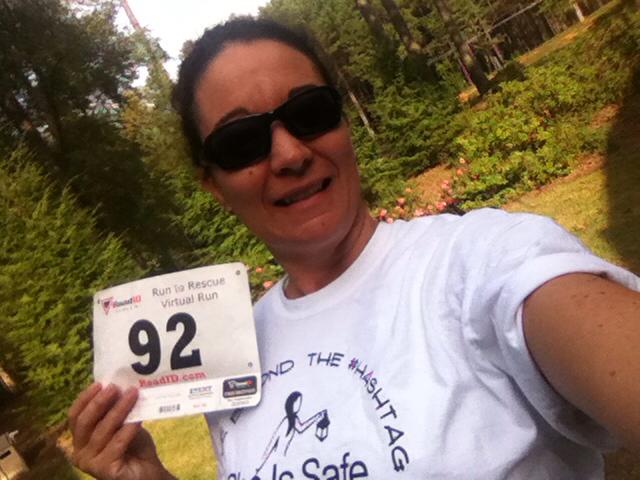I've gotten into the routine the past several months of taking dinners regularly to a friend who is battling cancer rather majestically.
If you know me, you know this particular category of servant behavior is not normal. If you don't know me, I'll just lay it out there: I don't even cook for my
own family that often.
You know how some people are just natural servants? My husband, for instance, has service wired into his genetic code somehow. Me, not so much. I'm fairly certain that if I took a spiritual gift inventory, "service" would rank somewhere in the basement.
Still, every two or three weeks, I find an empty spot on the "Take Them a Meal" list. I sign-up, listing "To Be Discovered" into the box where I'm supposed to state what meal I'm bringing. Then I hunt for tasty, cancer-fighting recipes and then prepare not one, but TWO meals. One, a typical "potluck" type meal for the family and one for Barb designed to help her body fight the enemy within her. When I learned that she is now left with just diet and lifestyle to battle her disease and the strict dietary plan she follows, I couldn't stand the thought of making food for the troops that she would love but couldn't eat. So each trip, I try to find a dish for her that is both healthy AND satisfying.
I'm heroic, aren't I?
As a matter of fact, I'm not. Here is my dirty little secret.
The first time I took a meal, I signed up because there was a need and that's what good Christian women do. I'll be honest, as much as I love this woman, it felt a tiny bit inconvenient to lose an entire afternoon making a meal. (I'm a highly inefficient chef.)
Then I delivered the meal--still feeling a bit hassled by the whole thing because this servant thing is NOT me--and here's what I found: It's addicting.
I took the meal hoping to minister to a friend, but found myself the one ministered to. It has been the same with every meal I've taken her--perhaps a different way every time, but no matter how harrowing the day or week preceding the drop-off has been, I walk away with a spring in my step and smiling.
So, you see, I'm not sure you could call my meals-on-wheels to Barb an act of Christian service--because when it comes right down to it, I find I'm doing it for myself as much as for her. I realized it today as I left her meal with her.
This past week has been a doozy between the re-structuring at my husband's company that means a significant pay cut for him, and the rather measly enrollments for my homeschool classes that means even less money--but still the same bills and kids in college.
Out of curiosity, I did a quick scan of possible jobs for which I might qualify---and had the devastating realization that although I am smart, capable, and highly educated, I don't think I could get hired for a single one of them. The last time I received a paycheck from an employer was before the turn of the century. (The current one, in case anyone wonders.) It seems the greatest career achievement I could aspire to now is to be the oldest living bagger at the local Publix.
On top of that, we have all the nail-biting angst and frustration that can accompany the season of parenting young adults and releasing them to make their own way, mistakes and all.
You get the picture. Big old pity-party going on in my head.
I'm sitting here now after my time with Barb, and how things have changed. Not in my circumstances, but in my heart.
She greeted me with the same 1000-watt smile and beautiful, gracious welcome that has not been dimmed one bit by cancer. In just ten short minutes we shared news, encouragements, hugs, LIFE, and once again, my step and my mood were lighter. Then, as she waved goodbye, she said, "I'm just so glad I get to see you! Not everyone in my clinical trial did so well."
Meaning: not everyone in her situation still has the health to stand and chat with friends.
Well. Nothing like a little perspective crashing your pity party.
I drove home slightly heavier of heart than I normally am after time with my sunny friend, but it was a good heaviness. I was heavy from the grief that brings repentance.
Who am I to complain?
I may have mountains of bills and less money to throw at them--but not a single one of them is a hospital bill.
My life might feel like rolling a boulder uphill most days, but I pretty much take for granted that I will
get that next day to push--and have the strength to do it.
My kids may be making some choices that are not what I would choose for them, but they are generally heading in the right direction and attempting to live lives of meaning and contribution. We still have close relationships and for the most part they like spending time with me. (And if any of my darlings happens to read this, of
course I am talking about your siblings, not you.)
Most significantly, despite all the worry-inducing events of the week, this week also marked the twenty-fourth year that I have gone through this life with possibly the best man alive. No matter how great or how sucky were the circumstances we've gone through, one thing that has been a constant is that we actually relish walking through them
together.
So, here is my official declaration: I REPENT of my ingratitude, Lord.
I love you, Barb. Every single breath you take is touching someone.






























